Unlike HSV’S forlorn supercharged XU6, FPV cracked the six-cylinder muscle car thing straight off the bat in 2004 with the F6 Typhoon. And it’s easy to see why. Ford had built a beast in the Falcon XR6 Turbo, a car that shook Australia off the idea that Ford muscle cars had to have eight cylinders, and then FPV injected a whole lot more attitude – big brakes, fatter tyres, significant power increase and a complete restyling inside and out.
The BA Mk II version was short-lived before the lightly updated BF version arrived in late 2005, but even the former’s infamous twin-plate clutch recall debacle couldn’t put a dampener on the birth of an instant performance icon that hung around until FPV’s demise.
Punters swooned over its optimal layout, enveloping turbocharged torque and seemingly limitless tuning potential. However, this is exactly why you should now be diligent when seeking out one for yourself, with a crucial checklist to review before buying this performance hero.
FPV F6 Essential checks
Engine
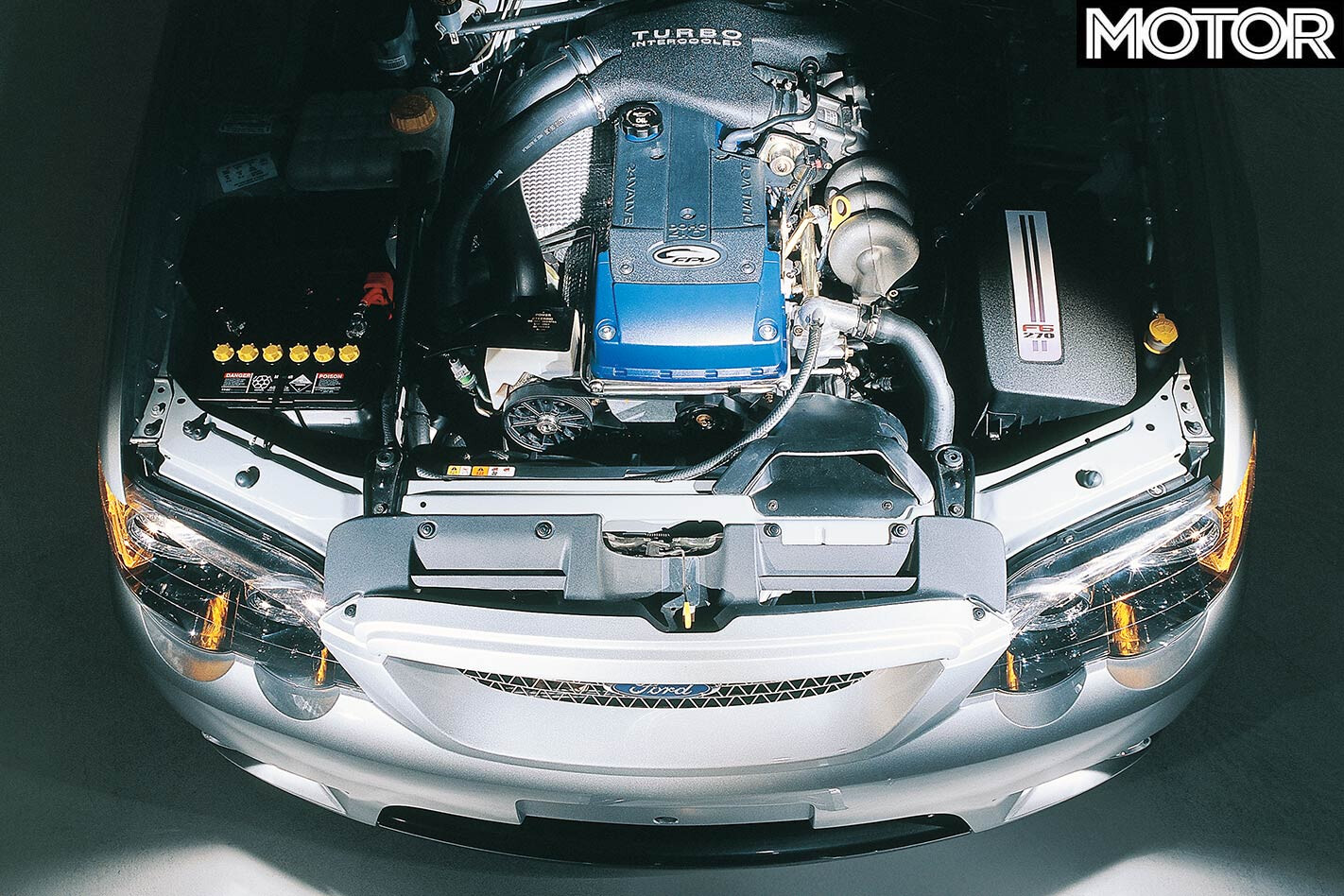
Arguably the crown jewel in the F6’s arsenal, the ‘Barra 270T’ 4.0-litre inline-six unlocked 270kW/550Nm through its revised pistons, stronger rods, freer-flowing dual-entry airbox and larger intercooler. Now, 15 years down the track, the things to look out for are leaking main seals and timing cases. The latter is more of an issue with BF versions, while a leaking main can wear out harmonic balancers, which cost $400 to replace. And, though F6s had strong valve springs, look for a rough engine idle, which might suggest they’re going soft – it’s $850 for a new set. Also listen to the turbo after switching off the engine, since a metallic sound indicates oil starvation and a blocked oil feed line.
Transmission
While the prototype BA II Typhoon F6 was fitted with a T5 manual, the production model came with a heavily revised Tremec six-speed manual mated to a twin-plate clutch. An automatic wasn’t added until the BF arrived in late 2005. Although the flaws in the BA F6’s original clutch are well documented and FPV undertook a full recall, the upgraded AP-Racing unit is relatively bulletproof – good for more than 400kW at the wheels. If there’s any problem, you will notice it during a test drive; it might pop out of second gear if it’s had a particularly hard life.
Suspension
The BA II F6’s suspension was upgraded with stiffer rear coil springs and 10mm-wider tyres over the standard XR6 Turbo. The damper struts last a while and only need attention if you can spot leaking oil, but check out the front upper control arm bush; you will hear a knock under braking or see the front wheel move in the wheel well, but this is easily fixed with polyurethane items. Also inspect the rear control blade bushes and front swaybar brackets, as they’re also known to perish under hard driving.
Body and structure
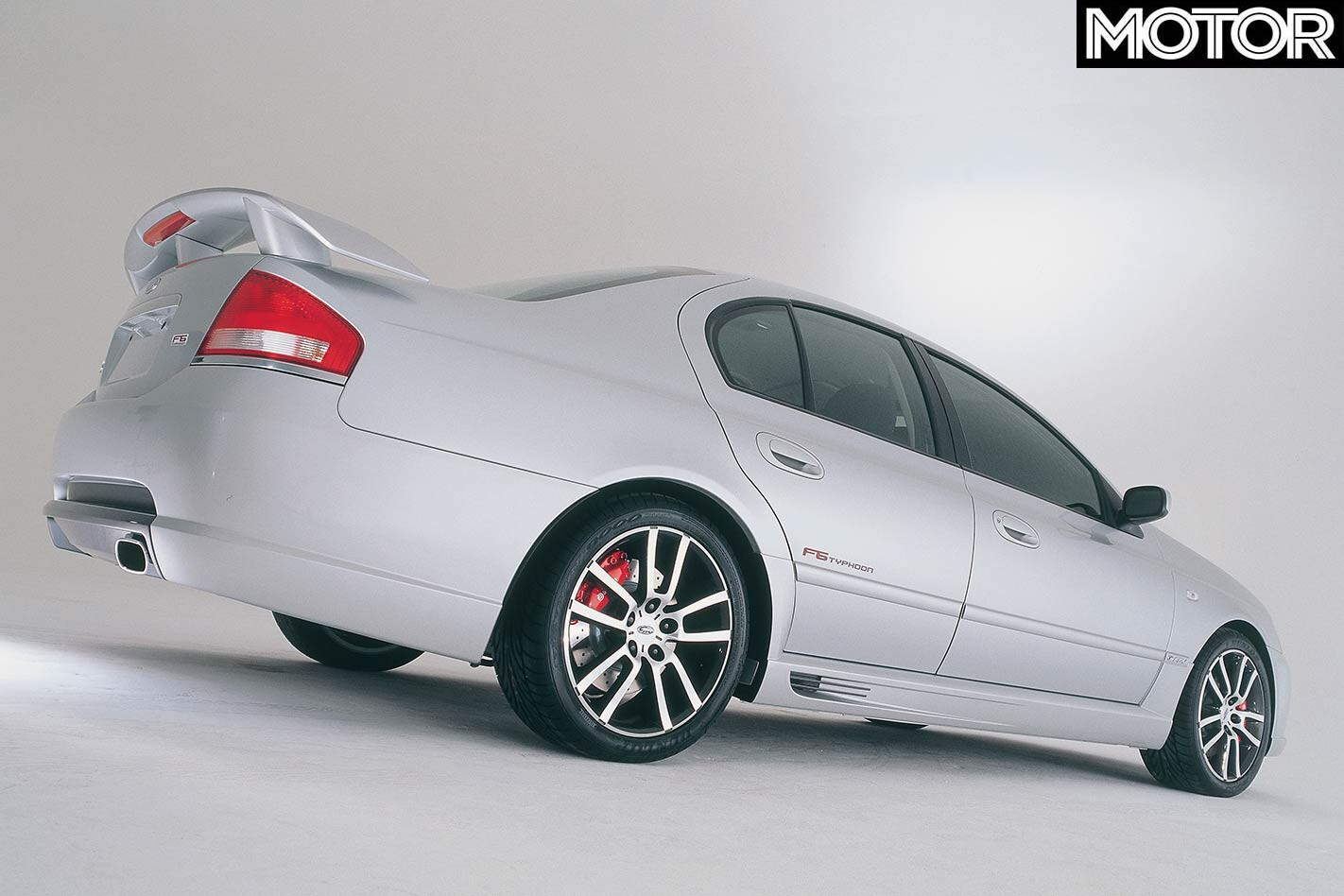
In terms of rust, there are a few spots to keep an eye on, like the bottom of the driver’s door, where a rust bubble can form. Apart from the boot seal, the only other spot, and perhaps more common, is where the firewall meets the inner guard along a filler join. This can be inspected by simply poking your head under the bonnet. Soft rear diff bushes are known to wear, and if not replaced in time the wobbly diff can wear out centre tailshaft bearings or even crack the rear K-frame under hard launches. Inspect all three.
Brakes and steering
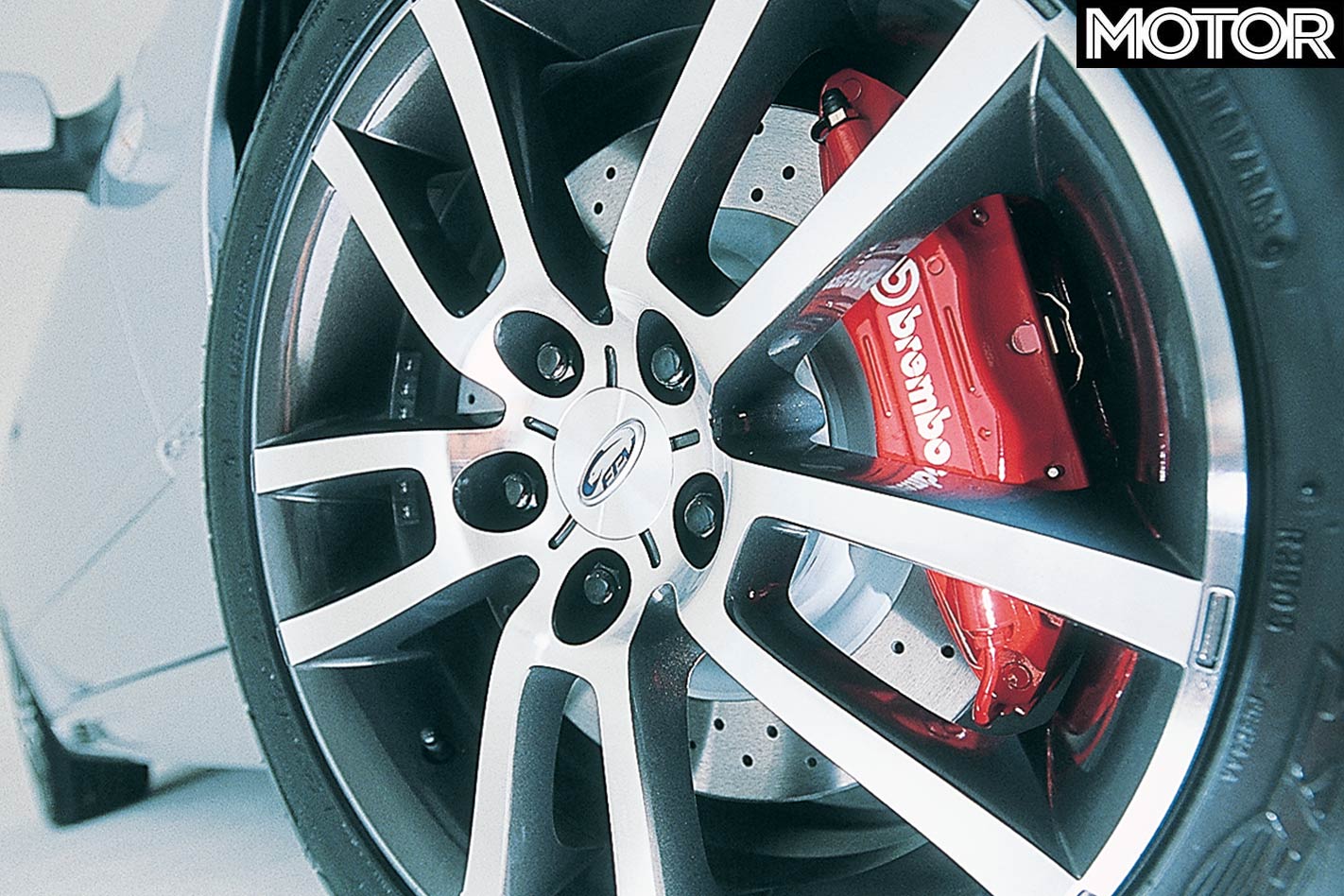
BA II Typhoons scored a PBR two-piston sliding set-up or optional (at a whopping $6K, or about $8500 in today’s money) Brembos with four-piston calipers up front. The PBR system is reliable and you can expect a decent life out of the grooved discs. It always pays to check pads and fluid when inspecting a car to potentially save you a couple hundred bucks. Steering-wise, the pumps are known to make noises after 50,000km, but an underdrive pulley that slows them by around 20 per cent can help extend their life.
Interior and trim
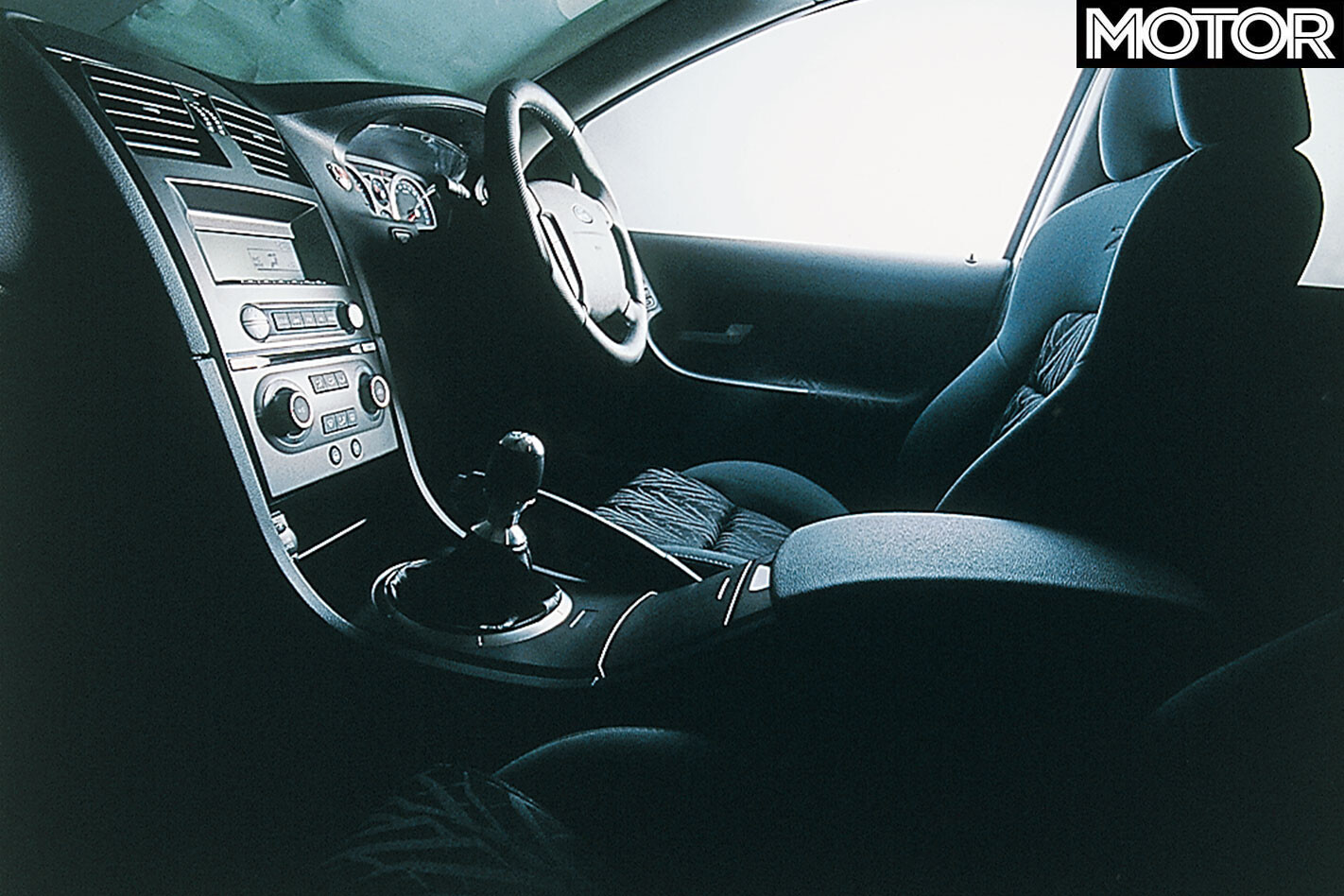
The F6 Typhoon’s interior is a hard-wearing and comfortable affair, with dash and plastics that hold up well even today. However, it wasn’t immune to the well-known saggy roof lining problem on the driver’s side, which can cost as much as $600 to replace. Both leather and cloth seats have stood the test of time, with only the bolster tending to collapse. The leather wrapped around the manual gearknob loosens with use and can be a good indicator on how hard a life the car has had.
Improving the breed
This is the fun part, since the F6’s larger intercooler, freer-flowing intake and stronger engine welcome a fiddle. Injectors, fuel pump, higher-flow cat, high-flow air filter, plugs and an engine tune at a reputable tuner like Melbourne’s Maxx Performance will set you back around $3K but will take power from around 200kW at the wheels to 280-300kW. Upgrade the valve springs next, as well as the intercooler and exhaust, and after porting the stock Garrett 3582R turbo while upgrading its wastegate flap, you’re looking at 350-380kW. Using E85 will push you to 440kW. And there’s just as much potential in the chassis. A good set of coilovers and polyurethane suspension bushes go a long way to sharpening the car’s responses and maximising grip.
OTHER OPTIONS YOU MAY CONSIDER:
1. HSV Clubsport manual
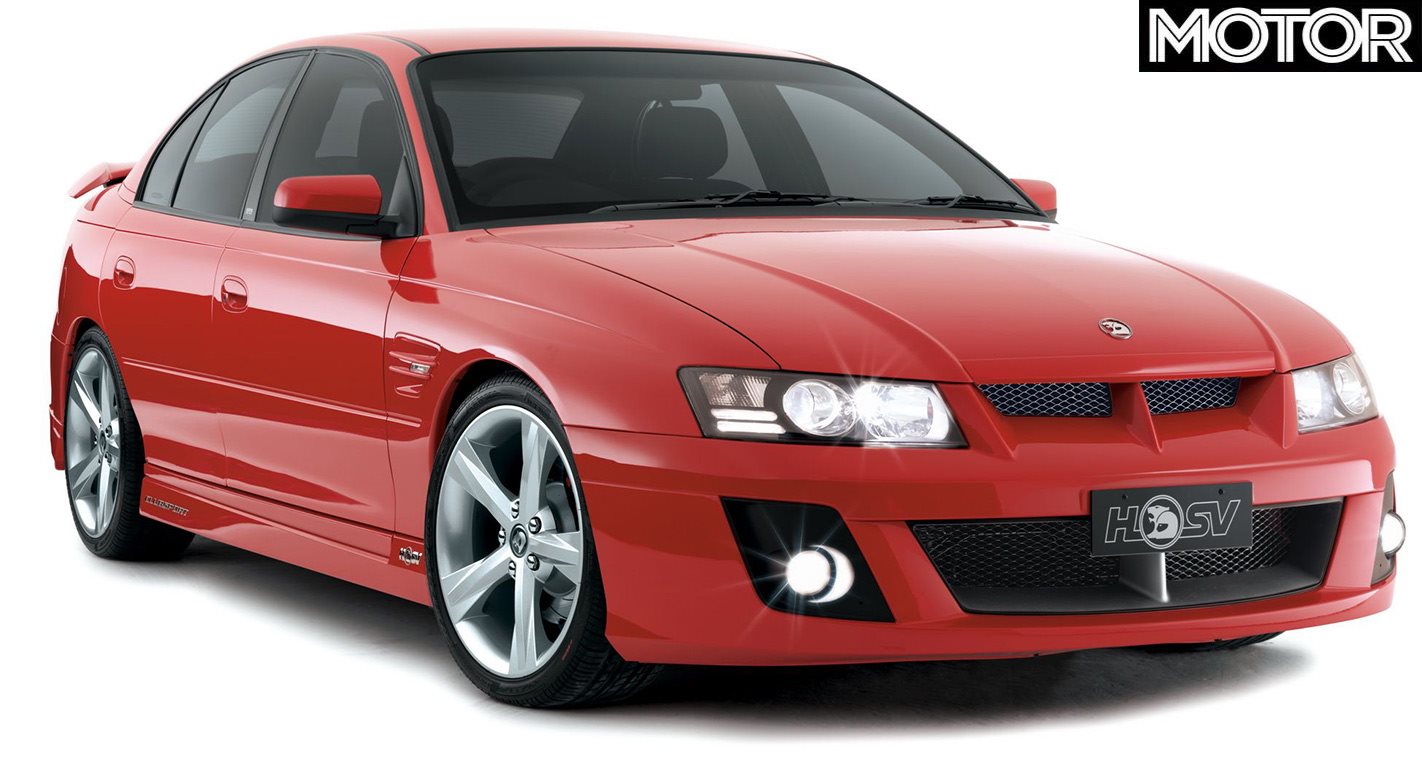
The F6’s natural rival in the day was the VZ-based HSV Clubsport. Its 6.0-litre LS2 V8 had the F6’s measure on power, with 297kW, but its 530Nm was out-grunted, and contemporary reports say its chassis played second fiddle to the F6 as wel
2. BMW E60 M5
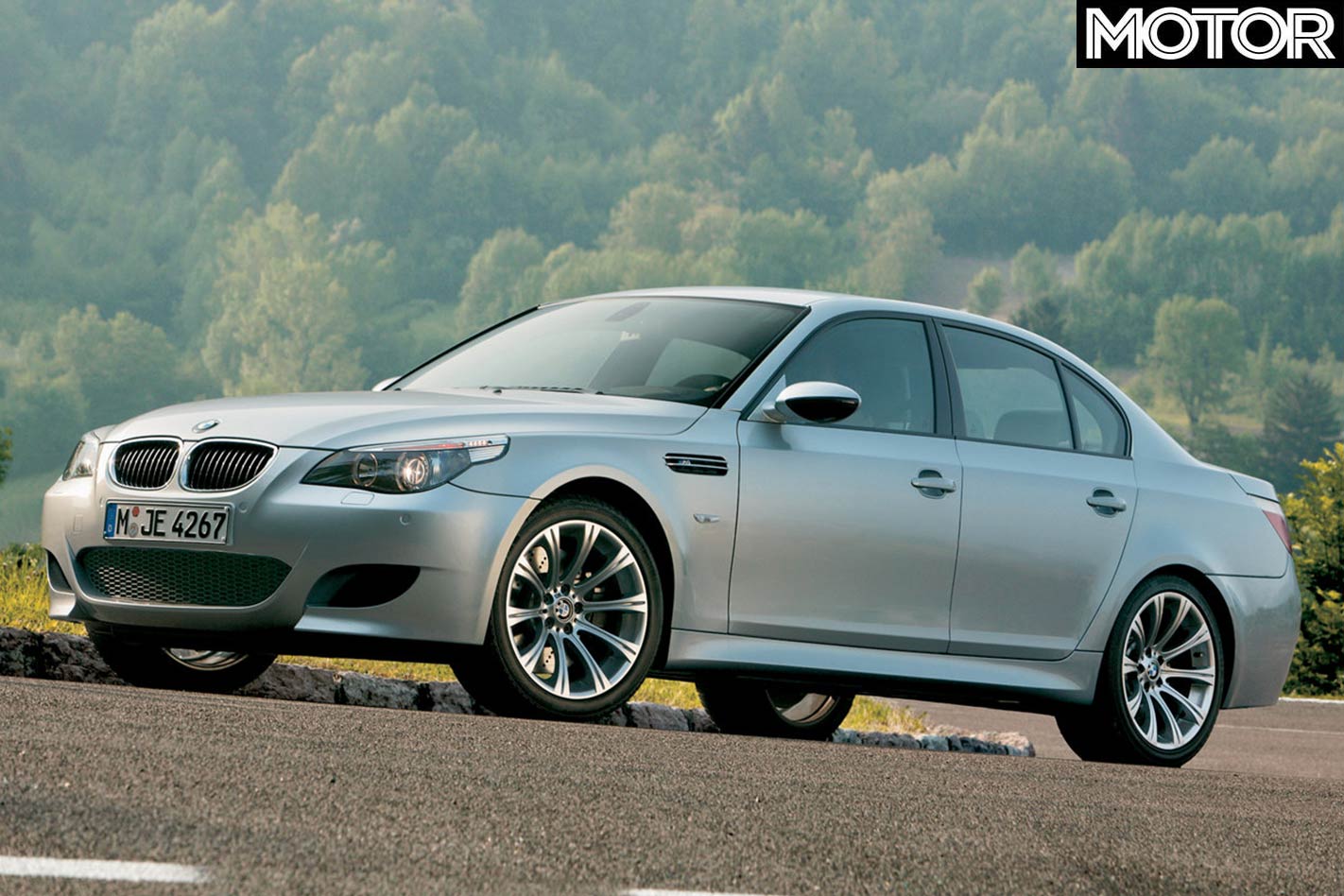
There’s much more chance of an overlap in price between the BF F6 and the E60 M5 these days than back in 2007. The V10-powered executive express was a much more exotic option, but you would have to settle for a semi-auto.
3. BA FPV GT
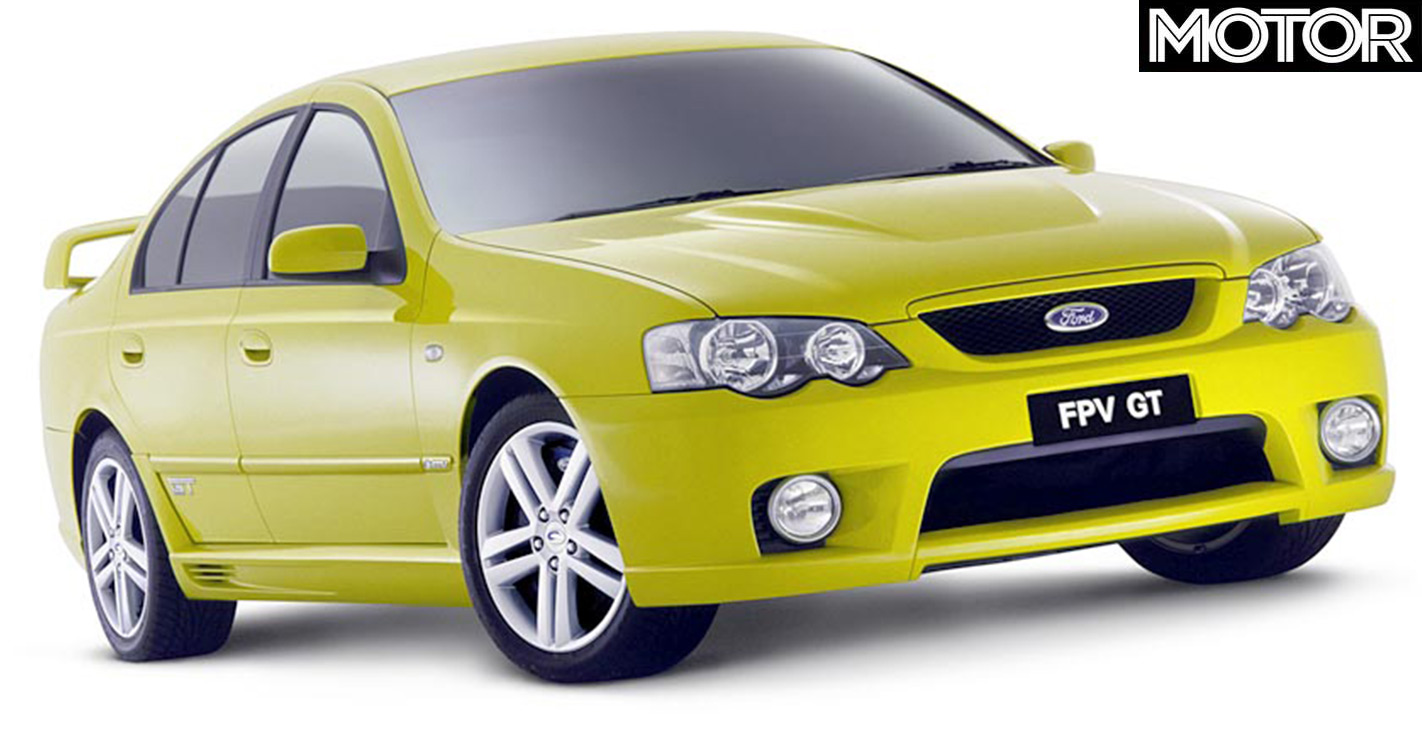
For those who can’t bring themselves to buy a six-pot muscle car, there remains the V8-powered GT (original concept pictured). It’s a sweeter steerer, by a fraction, but it must be said its 5.4-litre ‘Boss’ DOHC V8 can’t match the F6 for in-gear punch.
2004 FPV F6 TYPHOON SPECS
Body 4-door, 5-seat sedan Engine 4.0-litre inline-six, DOHC, 24-valve, turbo Power 270kW @ 5250rpm Torque 550Nm @ 2000-4250rpm Transmission 6-speed manual (6-speed auto optional) Used Range $15,000 to $30,000





